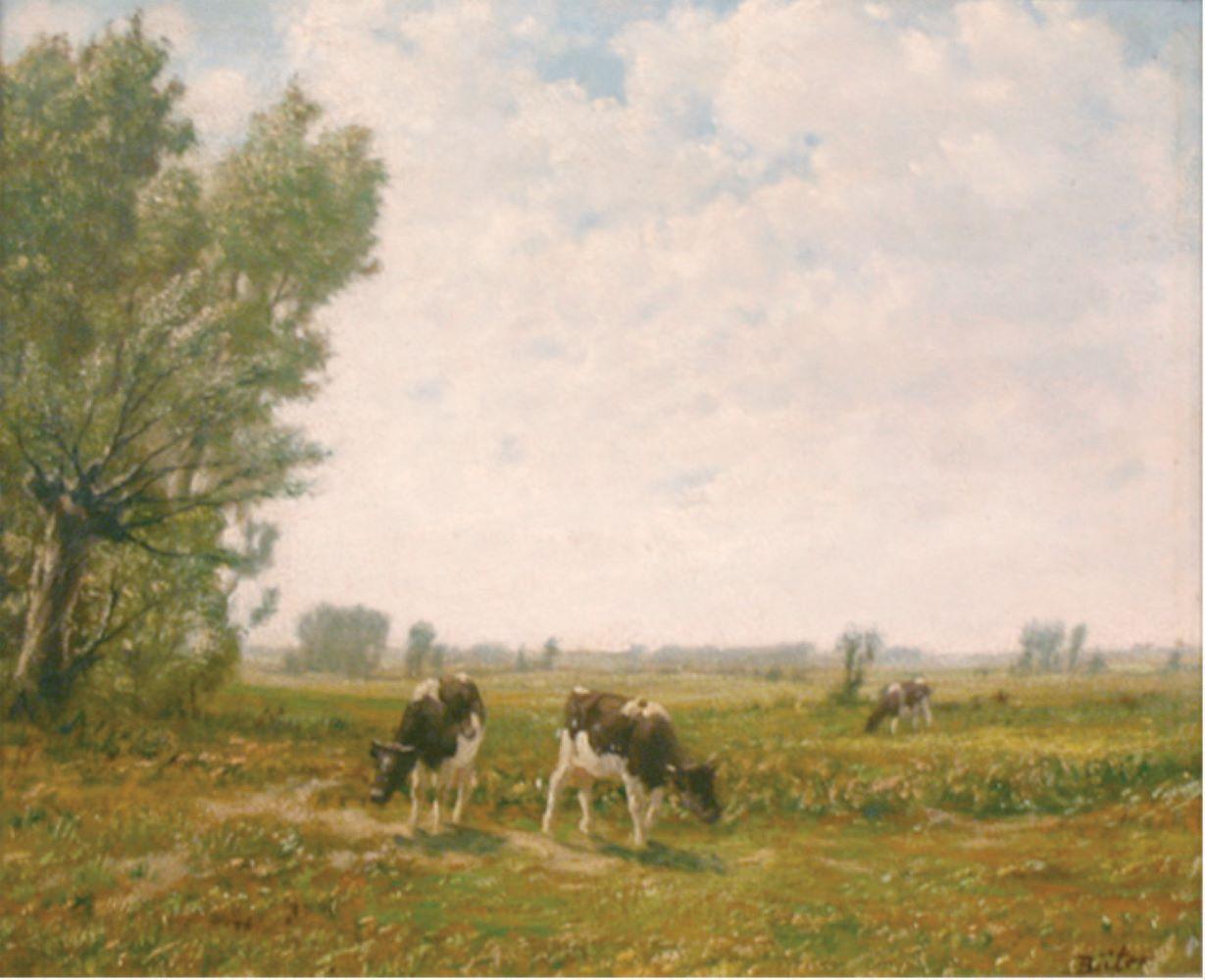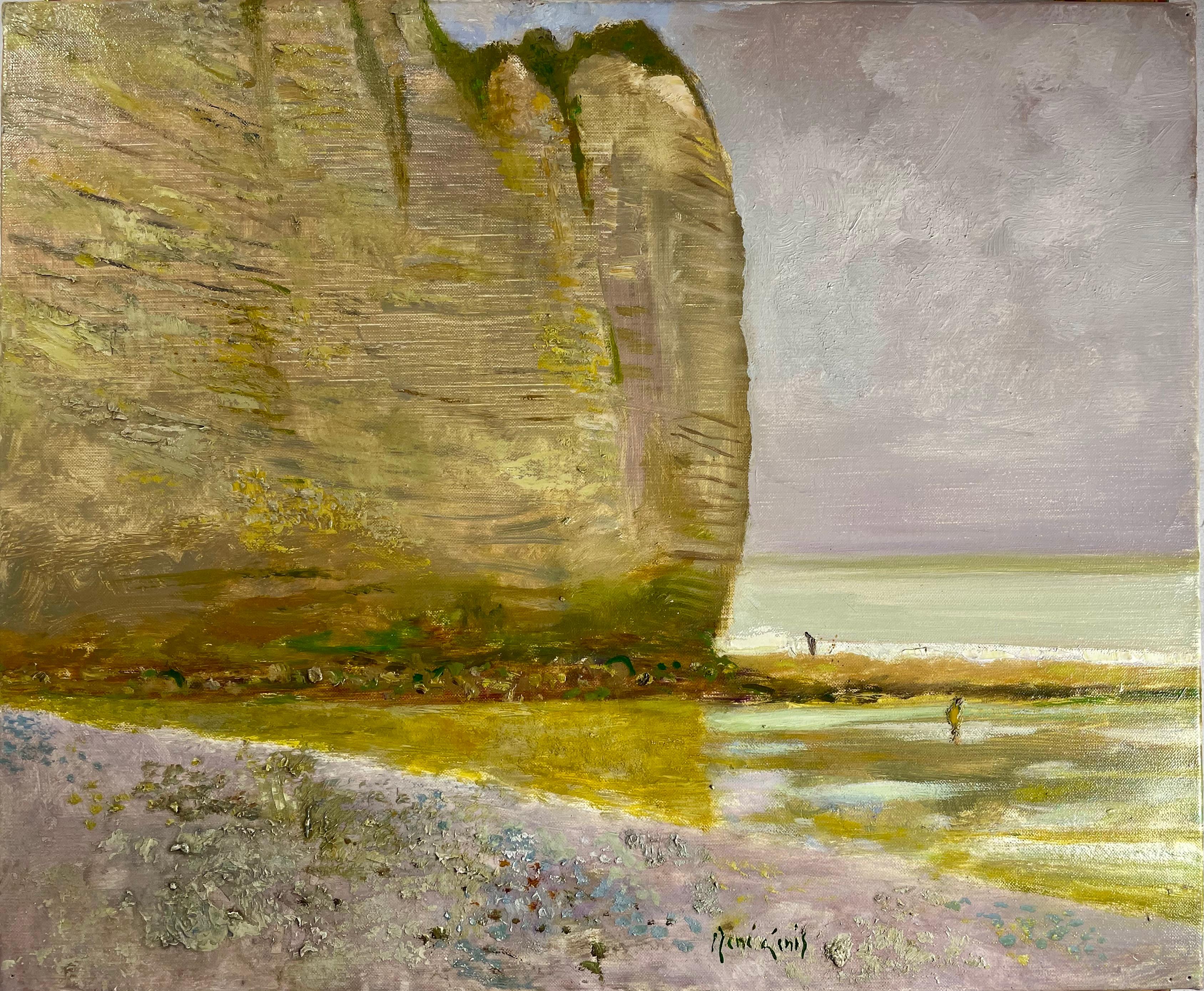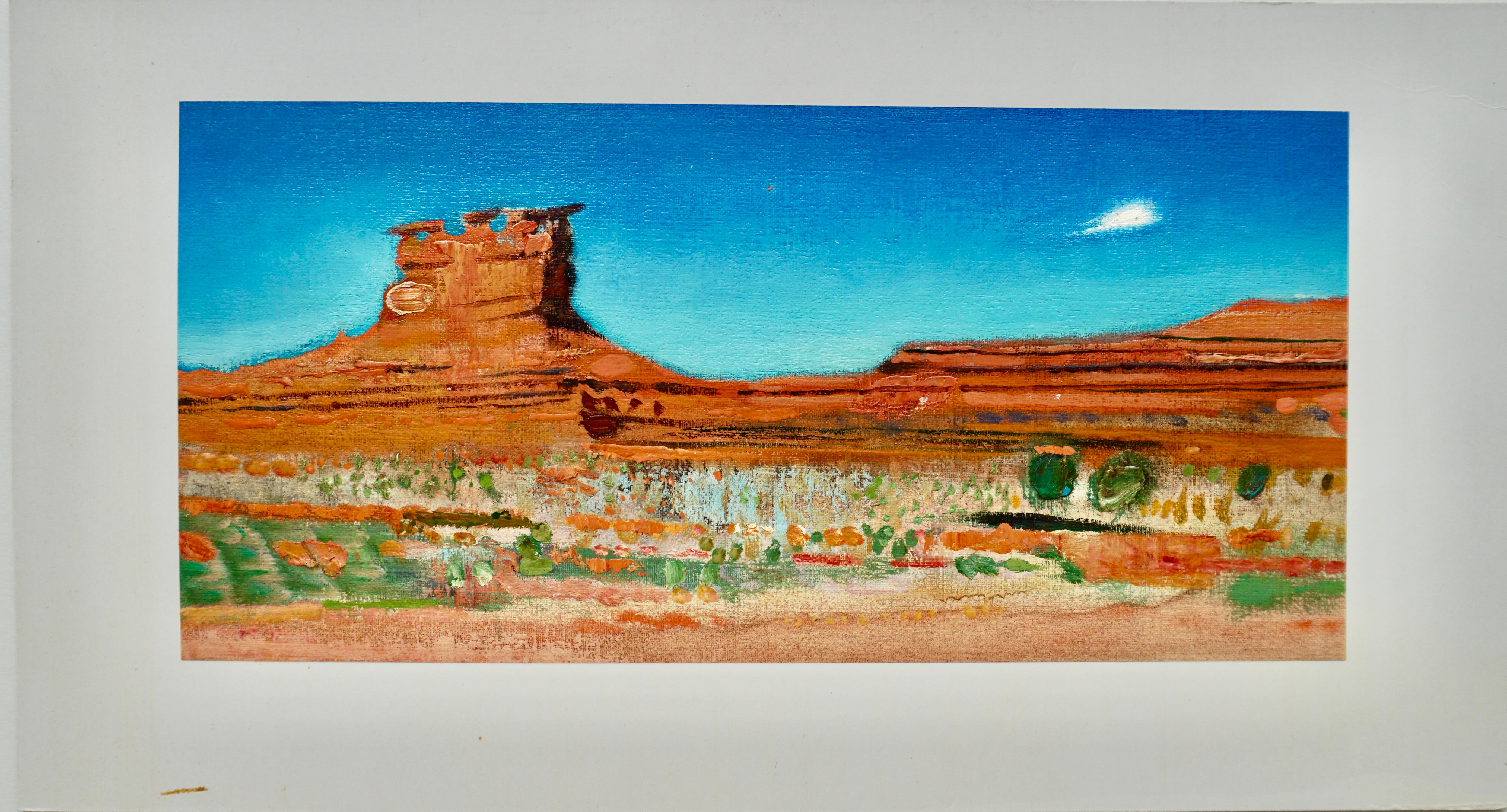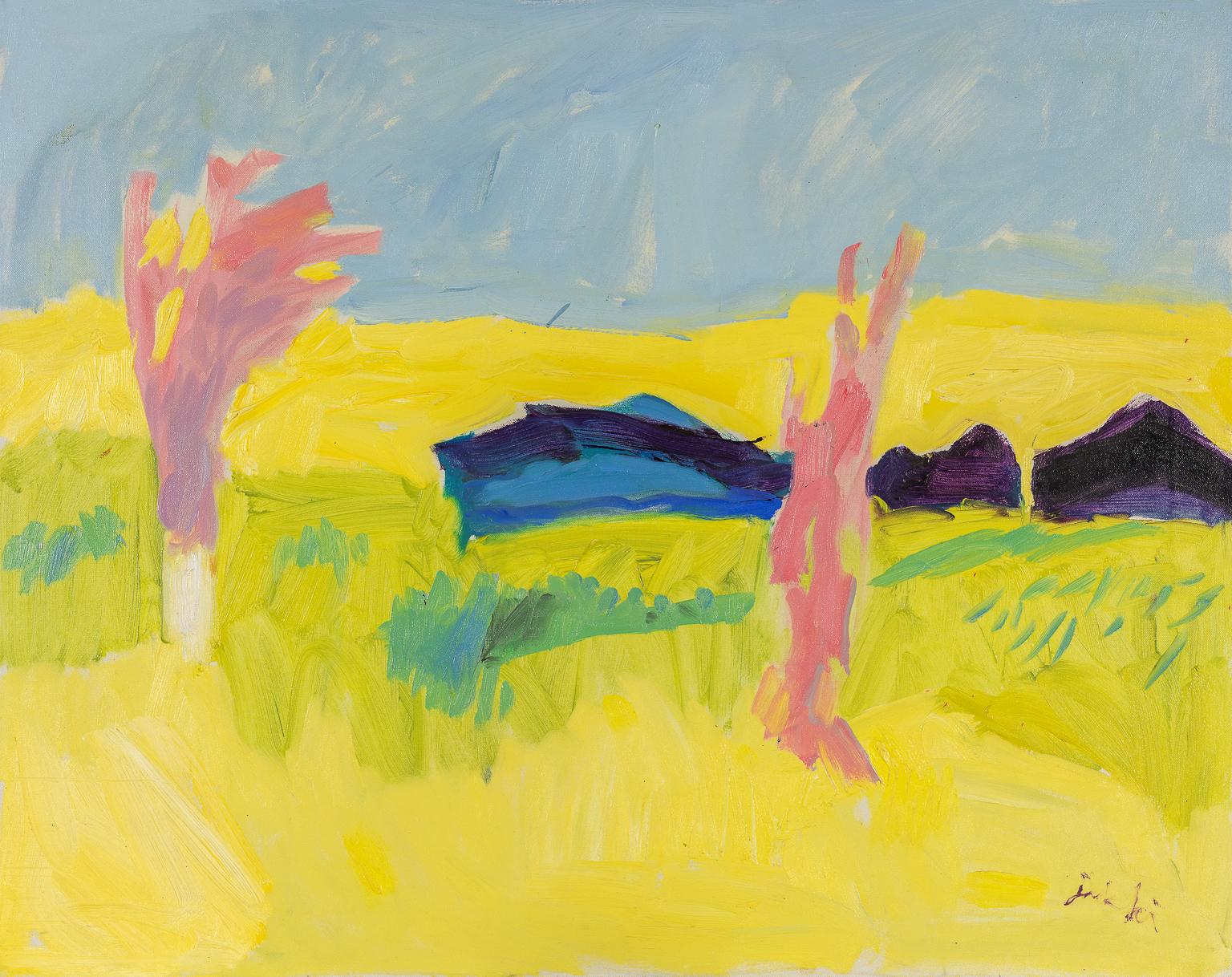Items Similar to "Canal Pinelli, Venise" Paul Désiré Trouillebert, Venetian Scene in Italy
Want more images or videos?
Request additional images or videos from the seller
1 of 12
Paul Desire Trouillebert"Canal Pinelli, Venise" Paul Désiré Trouillebert, Venetian Scene in Italy
About the Item
Paul Désiré Trouillebert
Canal Pinelli, Venise
Signed lower left
Oil on canvas
18 3/4 x 12 3/8 inches
Provenance:
Artist's studio sale, 1887, no. 4
With M. Newmann London
Sale, Christie's, London, Save the Children Fund, May 16, 1961 (according to an inscription on the reverse)
Private Collection, United Kingdom
Literature:
Marumo et al, Paul Désiré Trouillebert: Catalogue Raisonné de l'œuvre peint, Stuttgart, 2004, cat. no. 0362 p. 336, illustrated.
Paul Désiré Trouillebert was born in Paris in 1829 and died in the city June 28, 1900. He is considered a portrait, genre and landscape painter from the French Barbizon School. He was a student of Ernest Hébert [1817-1908] and Charles-François Jalabert [1819-1901], and made his debut at the Salon of 1865, exhibiting a portrait. At the Paris Salon of 1869, Trouillebert exhibited “Au bois Rossignolet”, which was a lyrical Fontainebleau landscape that received great critical acclaim.
Trouillebert concentrated on portraits until about 1881, when he began to focus on atmospheric silvery landscapes steeping in cool damp color. In 1882, he exhibited a large landscape titled “Baignneuses” which was well received and helped him gain a reputation as a landscape painter. Another noted work was commissioned by Edmé Piot, a public works contractor. The painting, “Travaux de relèvement du chemin de fer de ceinture: le pont du Cours de Vincennes” (Cleveland Museum) was of a railway project initiated in 1851, after Napoleon III came to power. The commission included four related views of the Paris railway construction, which was completed in February 1889.
After the 1860’s, the misty Barbizon landscapes by Jean-Baptist- Camille Corot’s [1796-1875] had become astonishingly vogue, which brought about a trove of imitators. His followers and students; Henri Joseph Constant Dutilleux [1807-1865], George Devillers, Achille François Oudinot [1820-1901], Edouard Brandon [1831-1887] and Trouillebert were not trying to mislead the public, he was their idol. However, the greatest confusion has always been over works by Corot and Trouillebert because both artists painted river landscapes at dawn or dusk with a very similar approach, palette and style. Like Corot, Trouillebert painted a wide variety of subjects, including genre scenes, portraits and nudes.
Trouillebert would receive the most attention as a result of an 1883 court case involving one of his paintings. The painting “La Fontaine des Gabourets” had been sold by one of Paris’ more prominent dealers George Petit to writer Alexandre Dumas fils. Trouillebert’s signature and been removed and resigned Corot. The fake was discovered by Robaut and Bernheim-Jeune and returned to the original seller, Tedesco. Trouillebert, who had nothing to do with the fraud, brought legal action against the guilty parties to regain his reputation and clear his name. The trial made all of the papers and Trouillebert won his case. George Pettit was also cleared because he had purchased the painting in good faith. Both artists benefited from all of the attention brought by the newspaper articles.
Paul Désiré Trouillebert enjoyed a very successful career and a continuous demand for his work. His paintings were included in some the world’s most prominent public and private art collections, including that of Edgar Degas, who owned several of his canvases.
- Creator:Paul Desire Trouillebert (1829 - 1900, French)
- Dimensions:Height: 24 in (60.96 cm)Width: 18 in (45.72 cm)
- Medium:
- Period:
- Condition:
- Gallery Location:New York, NY
- Reference Number:1stDibs: LU1841214152642
About the Seller
5.0
Platinum Seller
These expertly vetted sellers are 1stDibs' most experienced sellers and are rated highest by our customers.
Established in 2021
1stDibs seller since 2022
59 sales on 1stDibs
Typical response time: 1 hour
- ShippingRetrieving quote...Ships From: New York, NY
- Return PolicyA return for this item may be initiated within 3 days of delivery.
More From This SellerView All
- "Pastoral Landscape, " William Hart, Hudson River School, Cloudy View with CowsBy William HartLocated in New York, NYWilliam Hart (1823 - 1894) Pastoral Landscape, 1877 Oil on canvas 9 1/2 x 14 1/2 inches Signed and dated lower left Born in Paisley, Scotland, William Ha...Category
1870s Hudson River School Landscape Paintings
MaterialsCanvas, Oil
- "Train Trestle, " Frank DuMond, Old Lyme Connecticut Impressionism LandscapeBy Frank Vincent DumondLocated in New York, NYFrank Vincent DuMond (1865 - 1951) Train Trestle Oil on canvas 24 x 30 inches Signed lower left; estate stamped on the reverse Provenance: Estate of the...Category
Early 20th Century American Impressionist Landscape Paintings
MaterialsCanvas, Oil
- "Last Light, Landscape at Sunset, " William Keith, California Tonalist, ForestBy William KeithLocated in New York, NYWilliam Keith (1838 - 1911) Last Light, Landscape at Sunset Oil on canvas 25 x 30 inches Signed lower right A native of Scotland, William Keith became in the late 19th and early 20th centuries a leading Northern-California landscape artist. In fact, he was so well known that he is referred to as the "Dean of California painters." His romanticized views of nature found much favor among the culturally aspiring citizens of San Francisco and hung in many foyers and dining rooms in their elegant homes. He completed thousands of paintings and drawings, and many of them were lost in his studio in the fire of 1906. His early works are dramatic mountainscapes in a realistic style adopted from the Dusseldorf School of Germany. The paintings of the last two decades of his life are looser and obviously influenced by his exposure in France to the Barbizon School of landscape painters, who were the first colony of painters to complete paintings "en plein air," or directly from nature rather than in studios. A forerunner of Impressionism, this style also included Tonalism espoused by Barbizon painter Camille Corot [1796-1875] and also apparent in Keith's later works, which are darker, smaller, and much more intimate with emphasis on mood. Born in Aberdeenshire, Scotland, Keith came to New York with his family and, apprenticed to a wood engraver. In 1859, he moved to San Francisco where he worked for an engraver and later set up his own engraving business. Studying with Samuel Marsden Brookes in 1863, he determined to become a painter. He married artist Elizabeth Emerson and did watercolor painting with her guidance. In 1868, he became a full-time painter, and that same year was commissioned to paint scenes along the Columbia River including Mount Hood. By August 1869 he had sold enough paintings to finance an extended journey to the East Coast and Europe including Dusseldorf, Germany throughout most of 1870, studying with Albert Flamm. After a visit to Paris, he expressed great admiration for "the modern school of French landscape painting including the Barbizon School. During the winter of 1871-1872, the Keiths lived in Boston where they shared a studio with William Hahn. Keith's work received critical acclaim there and in New York at the National Academy of Design. In 1872, he returned to San Francisco. A friendship with naturalist John Muir exposed Keith to many remote places and in-depth knowledge of nature. During the 1870s, he painted several "epic" eight by ten-foot High Sierra views. He also visited Alaska, and his paintings of Alaska were exhibited upon his return to San Francisco in a show at the Bohemian Club, titled 'Dreams of Alaska'. Keith's Alaska works are significant because they are not close transcriptions of actual scenery, but rather are fantasies inspired by Alaska. They are important as they represent a major break from the documentary tradition in landscape painting of Alaska, as they show an interest in capturing its spirit versus just the topography. The first wife of William Keith died in 1882, and in 1883, he married Mary McHenry, the first woman graduate of Hastings Law School. They soon went to Europe, and Keith studied portrait painting in Munich with consultations from J. Frank Currier and Carl Marr for two years. Keith then settled for the remainder of his life in Berkeley, California, at 2207 Atherton Street. His studio was in San Francisco where he commuted daily, painted prolifically, and taught many classes, mostly for aspiring female artists . In 1891, he shared his studio for several weeks with East Coast Tonalist George Inness, Sr. [1825-1894]. Both men painted in a similar style and were followers of the mystical teachings of Swedenborg. Among the locations where Inness and Keith painted together were Monterey and Yosemite, and it was reported they discussed art from every possible angle. Under Inness' influence, Keith painted more than ever in a Barbizon-influenced vein with many sunset and twilight scenes. By the early 1900s, Keith was likely one of the wealthiest artists in the United States and certainly earned the most money of any California-based artist. People from all over the world sought out his studio where it was said that he would specially select a painting for a client from behind a black velvet curtain...Category
Late 19th Century Tonalist Landscape Paintings
MaterialsOil, Canvas
- "Portland Harbor, Maine, " Alexander Bower, Snowy River Scene in WinterBy Alexander BowerLocated in New York, NYAlexander Bower (1875 - 1952) Portland Harbor, Maine, 1910 Oil on canvas 27 x 33 inches Signed and dated lower right An American Impressionist, Alexande Bower was born in New York, studied at The Pennsylvania Academy of Fine Art, and was living with his wife in Cliff Island, Maine by 1914. Despite his urban upbringing, the coast and the sea fascinated Bower. A large portion of his paintings are seascapes, particularly scenes depicting the coast of Cape Elizabeth...Category
1910s Ashcan School Landscape Paintings
MaterialsCanvas, Oil
- "Meadow Landscape in Summer, " Harold Dunbar, Factory Scene, ImpressionismBy Harold DunbarLocated in New York, NYHarold C. Dunbar (1882 - 1953) Meadow Landscape in Summer, 1929 Oil on canvas 17 1/2 x 21 inches Signed and dated lower left Harold C. Dunbar — painter, teacher, writer, and illustrator — was born in Brockton, MA on December 8, 1882. He resided in Chatham, MA and died in 1953. His work includes portraits, landscapes, street scenes, still lifes, harbors and coastal scenes. Dunbar studied with Ernest Lee Major (1864-1950) and Joseph De Camp...Category
1920s American Impressionist Landscape Paintings
MaterialsCanvas, Oil
- "Gulls and Weir, " Philip Little, Coastal Landscape, New England ImpressionismBy Philip LittleLocated in New York, NYPhilip Little (1857 - 1942) Gulls and Weir Oil on canvas 30 x 30 inches Signed lower right; stamped on the reverse Provenance: Estate of William Postar,...Category
Early 20th Century American Impressionist Landscape Paintings
MaterialsCanvas, Oil
You May Also Like
- Bernhard ButerLocated in Saint Augustine, FLArtist: Bernhard Buter (1883-1959) German Title: Rhinish Landscape Medium: Oil on Canvas Dimensions: Framed 19” x 21” , Unframed 11 x 13” Bernhard Buter paints agrarian landscapes i...Category
Early 20th Century Realist Landscape Paintings
MaterialsCanvas, Oil
- "Les Falaise Normande" (The Cliffs Of Normand)By René GenisLocated in Berlin, MDRene Genis (French 1922-2004) “Les Falaise Normande” / The Cliffs of Normand. A sea scape with high cliffs, the beach, and two fishermen. The cliffs are in browns, tans and olives a...Category
1990s French School Landscape Paintings
MaterialsCanvas, Oil
- "Monument Valley"By René GenisLocated in Berlin, MDRene Genis (French 1922-2004) Monument Valley. 1967. Beautiful oranges, browns, greens against a turquoise blue sky. Oil on canvas, laid on mat. Si...Category
Mid-20th Century Landscape Paintings
MaterialsOil, Canvas
- Early oil depicting the Great Fire of LondonLocated in London, GBThe Great Fire of London in September 1666 was one of the greatest disasters in the city’s history. The City, with its wooden houses crowded together in narrow streets, was a natural fire risk, and predictions that London would burn down became a shocking reality. The fire began in a bakery in Pudding Lane, an area near the Thames teeming with warehouses and shops full of flammable materials, such as timber, oil, coal, pitch and turpentine. Inevitably the fire spread rapidly from this area into the City. Our painting depicts the impact of the fire on those who were caught in it and creates a very dramatic impression of what the fire was like. Closer inspection reveals a scene of chaos and panic with people running out of the gates. It shows Cripplegate in the north of the City, with St Giles without Cripplegate to its left, in flames (on the site of the present day Barbican). The painting probably represents the fire on the night of Tuesday 4 September, when four-fifths of the City was burning at once, including St Paul's Cathedral. Old St Paul’s can be seen to the right of the canvas, the medieval church with its thick stone walls, was considered a place of safety, but the building was covered in wooden scaffolding as it was in the midst of being restored by the then little known architect, Christopher Wren and caught fire. Our painting seems to depict a specific moment on the Tuesday night when the lead on St Paul’s caught fire and, as the diarist John Evelyn described: ‘the stones of Paul’s flew like grenades, the melting lead running down the streets in a stream and the very pavements glowing with the firey redness, so as no horse, nor man, was able to tread on them.’ Although the loss of life was minimal, some accounts record only sixteen perished, the magnitude of the property loss was shocking – some four hundred and thirty acres, about eighty per cent of the City proper was destroyed, including over thirteen thousand houses, eighty-nine churches, and fifty-two Guild Halls. Thousands were homeless and financially ruined. The Great Fire, and the subsequent fire of 1676, which destroyed over six hundred houses south of the Thames, changed the appearance of London forever. The one constructive outcome of the Great Fire was that the plague, which had devastated the population of London since 1665, diminished greatly, due to the mass death of the plague-carrying rats in the blaze. The fire was widely reported in eyewitness accounts, newspapers, letters and diaries. Samuel Pepys recorded climbing the steeple of Barking Church from which he viewed the destroyed City: ‘the saddest sight of desolation that I ever saw.’ There was an official enquiry into the causes of the fire, petitions to the King and Lord Mayor to rebuild, new legislation and building Acts. Naturally, the fire became a dramatic and extremely popular subject for painters and engravers. A group of works relatively closely related to the present picture have been traditionally ascribed to Jan Griffier...Category
17th Century Old Masters Landscape Paintings
MaterialsOil, Canvas
- I-90, Natick, MassachusettsLocated in Gloucester, MAPeter Lyons’s technique approaches photographic realism, but the precision in his paintings is an attempt to communicate a state of awareness, rather than ...Category
2010s Contemporary Landscape Paintings
MaterialsCanvas, Oil
- Hillside BarnsBy Zygmund JankowskiLocated in Gloucester, MAZygmund Jankowski (1925–2009) painted traditional subjects with exuberant irreverence for traditional rules of color, composition, and perspective. He disparaged imitation and deligh...Category
1980s Contemporary Landscape Paintings
MaterialsCanvas, Oil





